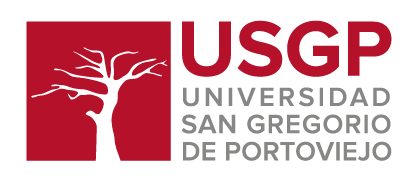Communication Skills in Athletes
Palabras clave:
communication, communication skills, athletesResumen
The aim of this study is to find out the different level of communication skills between volleyball, handball, basketball athletes. Near East University Athletes Development Club athletes’ participated in this study. The data collected from 60 athletes in the teams of volleyball (17), handball (24) and basketball (19) in 2018-2019. 38.33% of the participants were 19 years of age and 23.33% were between the ages of 20-22, 38.33% were aged 23 and over. Moreover, 51.67% were women and 48.33% were male. Frequency distribution in data analysis, t-test for comparison of two groups and ANOVA analysis of variance to determine the relationship between more than two variables, chi square, standard deviation, the fit of the data set to normal distribution, Shapiro-Wilk test, QQ plot graph and distribution-related skewness-kurtosis coefficients were examined. Levene techniques were applied for homogeneity of variances. The difference between the views of the groups was interpreted by taking into account the P <0.05 significance level. According to the results; there was no significant difference between the mean scores of the communication skills scale at the level of P <0.05 when the athletes were examined in terms of age and sports barriers, but the difference between the points they got from the behavioral sub-dimension in communication skills inventory was statistically significant. In conclusion, it has been found that sports have a positive effect on the communication skills of athletes.
Descargas
Referencias
Agara, T., The Role of Woman in Terrorism and Investigation of Gendering Terrorism. Journal of Humanities Insights, 2017. 01(02): p. 46-56.
Ahmadi, F. and S. Alizadeh, Study of Strategic Thinking of Managers based on their Mental Pattern. Journal of Humanities Insights, 2018. 02(02): p. 89-98.
Ahmadi, F., M. Rahimi, and A. Rezaei, Study of Relation between Business Model and Sensemaking Decisions. Journal of Humanities Insights, 2018. 02(02): p. 99-108.
Aida Badamchi Shabestari, S.M.M., Hanieh Malekzadeh, Force Degradation Comparative Study on Biosimilar Adalimumab and Humira. Revista Latinoamericana de Hipertensión, 2019. 13(06): p. 496-509.
Alahdadi, N. and M. Razaghi, Investigation of Lifestyle and Identity Changes of Khorramabad Residents in Iran. Journal of Humanities Insights, 2018.
(02): p. 51-59.
Așçi, F. H., Așçi, A., & Zorba, E. (1999). Cross-cultural validity and reliability of Physical Self-Perception Profile. International Journal of Sport Psychology, 30(3), 399-406.
Bahremand, A. (2015). The concept of translation in different teaching approaches and methods. UCT Journal of Social Sciences and Humanities Research, 3(1), 5-9.
Camiré, M., Trudel, P., & Forneris, T. (2009). High school athletes’ perspectives on support, communication, negotiation and life skill development. Qualitative research in sport and exercise, 1(1), 72-88.
Coşkuner, A. (1994). İletişim becerisini geliştirme eğitiminin işgörenlerin iletişim çatışmalarına girme eğilimlerine, yalnızlık düzeylerine ve iş doyumlarına etkisi. Yayınlanmamış doktora tezi, Ankara Üniversitesi Sosyal Bilimler Enstitüsü
Cüceloğlu, D., (1979). İnsan İnsana, Altın Kitaplar Basımevi, Ankara, s.13.97
Duffy, F. D., Gordon, G. H., Whelan, G., Cole-Kelly, K., Frankel, R., Buffone, N., ... & Langdon, L. (2004). Participants in the American Academy on Physician and Patient‟s Conference on Education and Evaluation of Competence in Communication and Interpersonal Skills. Assessing competence in communication and interpersonal skills: the Kalamazoo II report. Acad Med, 79(6), 495-507.
Egan, G. (1994). Psikolojik Danışmaya Giriş (Çeviren, Füsun Akkoyun). Ankara: Form Ofset. Ergin
Eliöz, M. (2016). Communication Skills and Learning in Impaired Individuals. Universal Journal of Educational Research, 4(11), 2589-2594.
Ersanlı K, Balcı S, 1998. iletişim becerileri envanterinin geliştirilmesi geçerli ve güvenirlik çalışması.Türk Psikolojik Danışma ve Rehberlik Dergisi, 10, 7-13
G. Hergüner, Ö. Güven, M. Yaman. , (1997) The Effect Of Sports On The Communicatıon Skıll Level Of The Unıversıty Students, Pamukkale Üniversitesi Eğitim Fakültesi Dergisi, No. 3, 95-101.
González, E. S. U., & Antúnez, J. V. V. (2016). Bioética como marco de la responsabilidad social en hospitales públicos. Opción: Revista de Ciencias Humanas y Sociales, (12), 830-856.
Hargie, O. (2011). Skilled interpersonal communication 5th ed.
Karasar, N.(2009), Bilimsel Araştırma Yöntemleri, Nobel Yayınları, Ankara.
Murzinova, K. E. A., Koblanova, A., & Ansabayeva, D. A. A. (2018). Prosodical means applied in communicative relations. Opción, 34(85-2), 61-96.
Mutlu, T. O., Şentürk, H. E., & Zorba, E. (2014). Üniversite öğrencisi tenisçilerde empatik eğilim ve iletişim becerisi. International Journal of Science Culture and Sport (IntJSCS).
Öksüz Y, 2005. “Psikolojik danışma ve rehberlikte hizmet türleri” psikolojik danışma rehberlik. Baskı, İstanbul, Lisans Yayınları, s. 40.
S.B. Çavuşoğlu, G. Günay. (2014) Perceptıons Of Communıcatıon Skılls Of Students Of School Of Physıcal Educatıon And Sports Of Istanbul University, Organizasyon ve Yönetim Bilimleri Dergisi, Vol. 6, No.1, 107-121, 2014.
Şahin N, 2012. Elit düzeyde takım sporu ve bireysel spor yapan iki grubun iletişim becerilerinin karşılaştırılması, SPORMETRE Beden Eğitimi ve Spor Bilimleri Dergisi, (1) 13-16.
Vargas-Hernández, J. G. (2016). THE QUESTION OF CHANGING THE CONCEPT, ROLE AND FUNCTIONS OF STATE. Humanities & Social Sciences Reviews, 4(1), 08-19. https://doi.org/10.18510/hssr.2016.412
Watts, W. J. (1979). Deaf Children and Some Emotional Aspects of Learning. Volta Review, 81(7), 491-500.



















